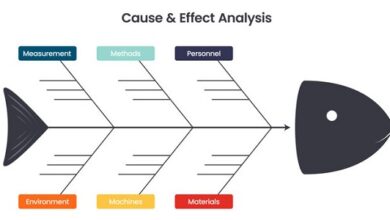Environmental responsibility of companies and ISO 14001
Environmental responsibility
Here we will present you the Environmental responsibility of companies and ISO 14001
Environmental responsibility is a commitment assumed by the company to change attitudes towards the preservation of the environment and the world that will be left to future generations.
Contrary to what many people believe, this responsibility does not only consist in complying with established laws and regulations, but in transforming policies and the organizational culture as a whole.
Thus, for environmental responsibility to be, in fact, incorporated into the organization, a change in attitude is needed, from the direction to the daily tasks of the entire company.
Betting on sustainable management focused on preservation is a complex task that demands study and commitment from the organization . However, this type of action directly reflects on society and on the company’s image.
What is ISO 14001?
ISO 14001 is an international standard designed to help companies adapt environmental responsibilities to their internal processes, enabling the organization to grow through the reduction of environmental impact.
In Brazil, the standard has a version represented by the Brazilian Association of Technical Standards (ABNT), entitled NBR ISO 14001 and published in 2015. The standard specifies the requirements for the implementation of an environmental management system that can be applied in all organizations , regardless of its size.
How did ISO 14001 come about?
ISO is an acronym in English that means International Organization for Standardization, which is formed by a commission from several countries. Thus, members bring together experts to create international standards . Standards are made voluntarily and based on consensus on important aspects of the market. Brazil is included in the ISO through ABNT.
Among several standards established by ISO, there is the 14000 series, which refers to environmental standards and covers aspects such as management, audits, labeling, communication, performance and life cycle analysis.
What are the goals of ISO 14001?
The main purpose of ISO 14001 is to enable organizations to meet their socioeconomic needs in balance with the protection of the environment . Within that, the standard has the following objectives:
- protection of the environment by preventing or reducing environmental impacts;
- reduction of potential adverse effects of environmental conditions on the organization;
- assistance to the organization in meeting legal requirements;
- increased environmental performance;
- control and influence over the projection, manufacture, distribution, consumption and disposal of organizations, using a lifecycle perspective;
- reach of the financial and operational benefits that can result in the implementation of environmental alternatives;
- communication of environmental information to interested parties.
What are the ISO 14001 benefits?
Being certified with an internationally recognized environmental management system brings several advantages to the organization. Below, we list the main benefits for companies with ISO 14001 certification.
1-Improvement of the environmental management system
The standard helps companies to improve existing environmental management items , enabling an improvement in the internal environmental policy and informing about the necessary adaptations for sustainable competitiveness, without severe impacts on the environment.
2-efficient growth
The reduction of unnecessary expenses and waste is one of the requirements that govern ISO 14001. Thus, companies that implement the standard are able to act more efficiently and without major financial losses .
3-Increased profitability
The drop in energy costs and waste also improves the profitability of the organization as a whole. Furthermore, by implementing ISO 14001, the company reduces costs by preventing pollution and reducing expenses with product disposal.
4-Compliance with environmental legislation
Environmental catastrophes resulting from errors in companies generate an exorbitant expense with fines, in addition to damage to the brand image. This type of problem can be so costly that some organizations have to close their doors .
The ISO 14001 certification, however, allows companies of all sizes to have greater knowledge of current environmental legislation, in addition to the main guidelines on measures to avoid environmental problems.
Thus, the environmental seal, in addition to ensuring the company’s “ecologically correct” image, also helps to prevent damages and fines for harm to the environment .
How to implement ISO 14001 in your company?
To implement the environmental management system and obtain ISO 14001 certification, the company must apply measures that meet the requirements of the international standard. Therefore, it is necessary to carry out a detailed survey of the organization’s current situation and adapt the processes to ISO requirements.
Implementation takes, on average, 10 to 18 months , but this time can vary depending on the size of the organization, the degree of involvement of management and the human resources available for the changes.
How to put environmental responsibility into practice?
Searching for sustainable initiatives is an excellent opportunity for your company to achieve success and competitiveness in the market. But to embrace this shift, you don’t necessarily need to make a major transformation right from the start .
In this sense, it is possible to start with small practices in the company’s day-to-day activities , such as goals to save resources or even the implementation of technological systems that replace printed documents.
Below, we list some habits that can be adopted and incorporated into the organizational culture from an early age. Check out!
1-make conscious choices
The purchasing sector is one of the main allies for a sustainable culture. That’s because he can make more conscious choices, giving preference to durable items that contain recyclable and biodegradable raw material .
Thus, when purchasing materials and furniture, it is important to avoid disposables and always opt for cleaner and smarter options , such as recyclable paper and even used second-hand furniture.
2-Encourage the use of alternative transport
When thinking about environmental responsibility initiatives, it is important to keep in mind that changes must be applied at all stages of the process.
Therefore, thinking about actions to encourage the use of alternative and collective transport, for example, can be a good way to reduce the emission of pollutants and make the organization more sustainable.
To do so, create bike racks and encourage your employees to give up cars. A good measure for this incentive is the carpool system and the adoption of public transport offered by the company.
3-Count on good partnerships
Partnerships with suppliers and distributors also help shape the company’s image in front of the public . Therefore, it is no use creating internal environmental responsibility policies if their suppliers are known for their great polluting potential.
Therefore, when establishing partnerships, it is essential to do a lot of research and use a rigorous standard for the choice. In this sense, look for partners who share the company’s values and who seek to carry out their processes with the least possible impact on the environment.
4-Track carbon and waste emissions
Neutralizing the carbon emissions produced by your company was already an arduous task. Currently, however, this calculation is relatively simple . This is because there is already specialized software that informs the amount of trees that needs to be planted to compensate for the release of harmful gases into the atmosphere.
Therefore, try to closely monitor the levels of carbon emissions and other waste in the environment and try to introduce compensatory actions that can reduce the impact caused by the company.
5-Flex the working model
Have you ever stopped to think about how much you spend daily to keep all your employees working allocated in the company? The truth is that this work not only costs your business , but also impacts the environment.
Because of this, many companies have opted for a more flexible work model: the home office . By performing remote work, the organization achieves a reduction in office resources. Thus, in addition to reducing traffic, it consequently reduces carbon emissions.
6-think before replacing
Over the years, we have become accustomed to the obsolescence that forces us to replace a tool whenever it shows any signs of defect . This type of attitude is very harmful to the environment and generates a significant impact due to the accumulation of electronic waste.
Therefore, it is important to keep in mind that excess waste is one of the biggest environmental problems in our society . Thus, opting for durable goods and seeking repairs and upgrades in equipment , before disposing of them, is an important attitude of environmental responsibility.
7-Minimize energy and water consumption
Reducing energy and water consumption is a simple attitude that can be implemented in companies of all sizes.
Thus, to reduce light consumption, it is possible to change the lamps for LED models, which are more economical, place sensors to avoid unnecessarily lit lights, take advantage of natural light in open environments and exchange old equipment for more efficient models.
As for water, it is important to investigate the presence of leaks , reduce the amount of water in production processes and opt for reuse whenever possible. In addition, it is essential to train your team so that consumption is carried out more consciously.
8-Implement the Zero Waste Kit for employees
The Zero Waste movement preaches the possibility of minimizing the generation of waste on a daily basis , reducing the environmental impact on the planet. The initiative has been gaining more and more followers, including in organizations.
Thus, one of the actions that can help with environmental responsibility is the distribution of the Zero Waste Kit to employees. In the kit, you can include:
- 1 set of reusable cutlery;
- 1 reusable straw with brush for cleaning;
- 1 cloth napkin;
- 1 re-usable retractable cup.
Also, items can be presented in a case that is easily carried by the collaborator. In addition to distribution, it is necessary to encourage use and present the sustainability proposal.
9-Incorporate environmental responsibility into the organizational culture
More than saving energy and opting for reusable items, it is essential that environmental responsibility is a strong value for the organizational culture and that it is taken seriously, incorporated into attitudes and not just for marketing.
Thus, sustainable practices should be included as an agenda in continuous training and development programs for the team, such as lectures, workshops and courses.
In addition, for employees to embrace the new vision, management can create collective sustainability goals , always measuring results and rewarding the team’s achievements.
10-Bet on a paperless routine
Finally, it is important that the company looks for solutions to minimize the use of paper. This may seem like a small initiative, but have you ever stopped to think about how much paper you spend printing candidate résumés in a recruiting and selection process, for example?
In addition to the expense of resources, this type of document needs a physical space for filing and is more difficult to access, causing employees to waste time searching for certain information. That’s when documents don’t end up lost or end up in the trash.
Therefore, the paperless initiative proposes a management with as little paper as possible in the work routine, which generates great savings in resources and time. For this, the physical routine is replaced by new technologies , which store information in the cloud and allow professionals to access documents wherever they are.



